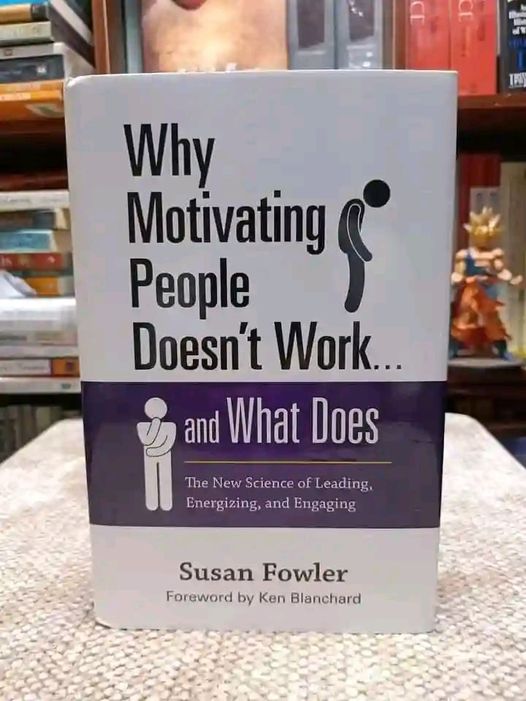"Why Motivating People Doesn't Work ... and What Does" throws out the outdated toolbox of carrots and sticks. Susan Fowler argues that true motivation is intrinsic, sparked by autonomy, purpose, and growth. Leaders should ditch controlling behaviors and instead foster supportive environments where individuals can thrive. Building strong relationships, celebrating progress, and leading by example are key to unlocking the full potential of teams and organizations. This book is a call for a paradigm shift in leadership, moving from extrinsic manipulation to nurturing intrinsic passion and driving lasting success.
Lessons from Susan Fowler's "Why Motivating People Doesn't Work ... and What Does":
1. Rethinking Motivation: The book challenges the traditional approach of external motivators like rewards and punishments. Fowler argues that true motivation comes from within and traditional methods often backfire, creating dependence and resistance.
2. The Power of Autonomy: Humans have a deep-seated need for autonomy. When we feel controlled and micromanaged, our motivation plummets. Instead, leaders should focus on empowering individuals to take ownership of their work and make decisions.
3. Cultivating Relatedness: We are social creatures, and meaningful connections are crucial for motivation. Leaders should foster a sense of community and belonging by building trust, encouraging collaboration, and celebrating shared successes.
4. Mastering Competence: Feeling competent and capable is essential for motivation. Leaders should provide opportunities for growth, development, and skill mastery. Recognizing and appreciating individual strengths and contributions further fuels motivation.
5. Optimal Motivation Model: Fowler proposes the "Optimal Motivation Model," which emphasizes aligning work with these three core human needs: autonomy, relatedness, and competence. When these needs are met, intrinsic motivation flourishes, leading to greater engagement, productivity, and well-being.
6. Beyond Leadership: The book's principles are relevant not just for leaders, but for anyone who wants to cultivate intrinsic motivation in themselves and others. Individuals can apply these concepts to their own work, relationships, and personal growth journeys.
7. Moving from Control to Coaching: Leaders should transition from controlling to coaching. This involves guiding and supporting individuals to discover their own motivation, find their strengths, and set their own goals.
8. Mindfulness and Self-Awareness: The book emphasizes the importance of mindfulness and self-awareness for both leaders and individuals. By understanding our own needs and motivations, we can create environments and strategies that foster optimal motivation.
9. Continuous Learning and Adaptation: The world of work is constantly changing, and so should our approach to motivation. Leaders and individuals should be open to learning new methods, experimenting with different approaches, and adapting to changing circumstances.
10. Building a Culture of Motivation: Creating a culture of optimal motivation is an ongoing process. Leaders should set the tone by practicing the principles themselves and encourage open communication, feedback, and collaboration to continuously improve the work environment.




